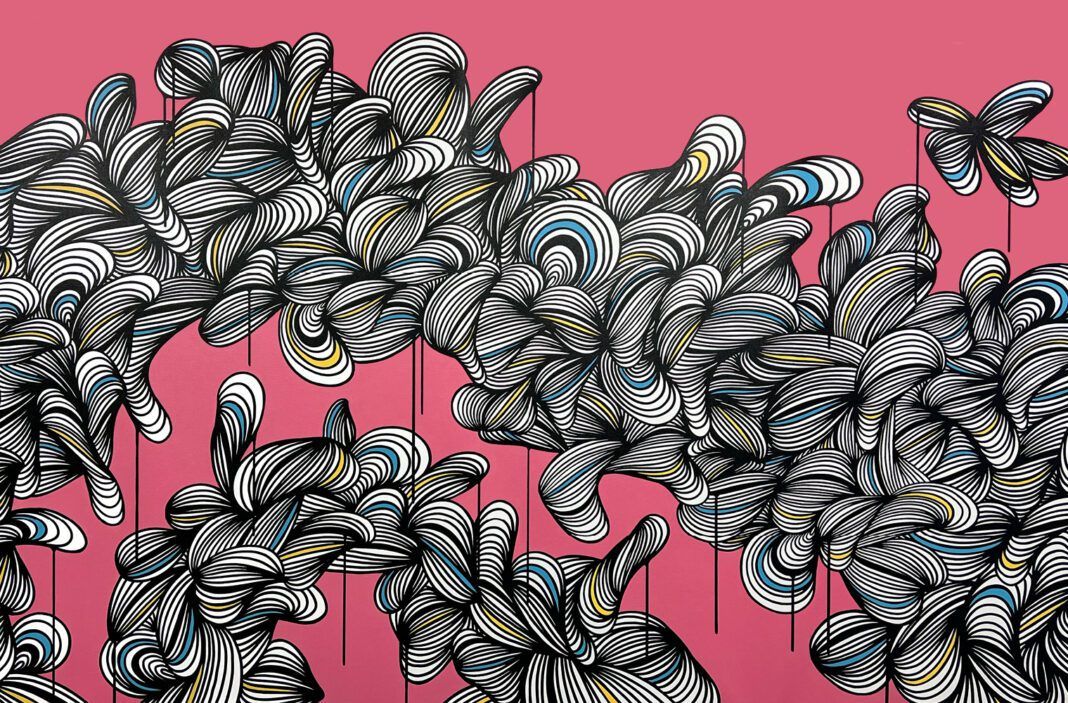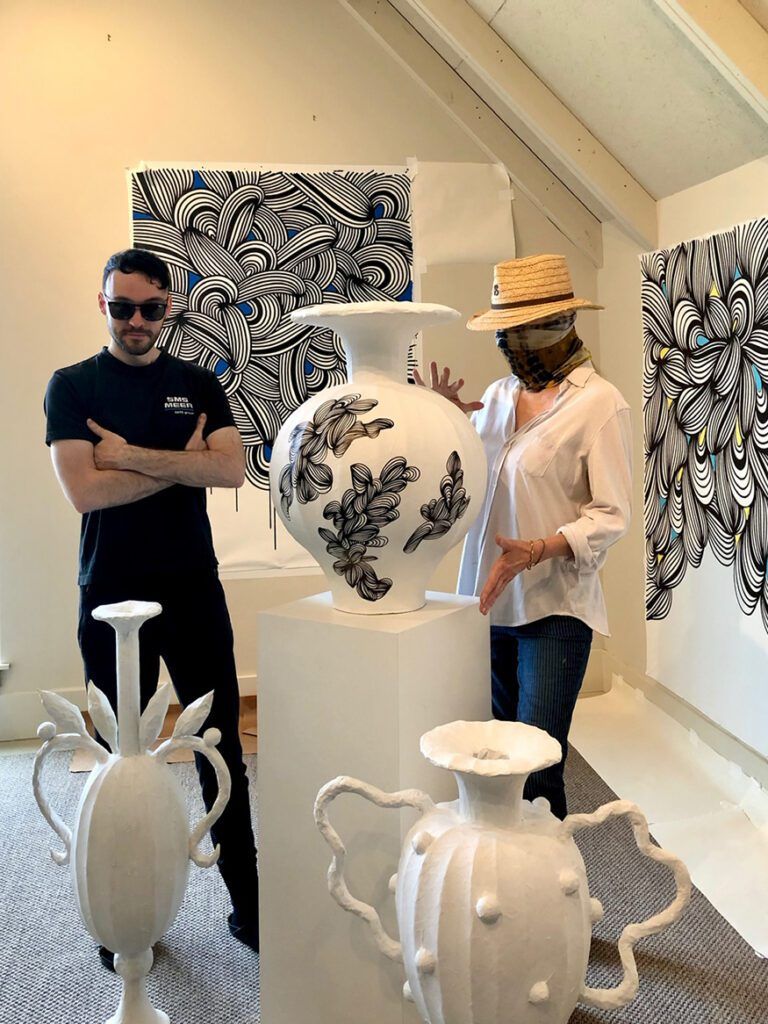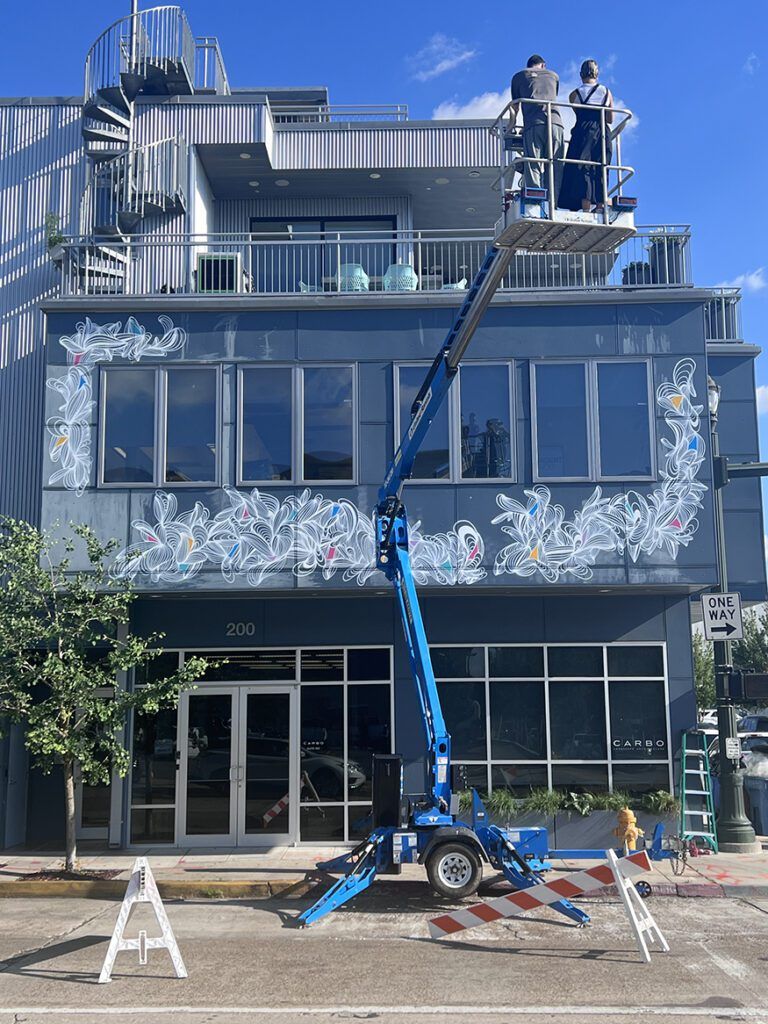The work of quiet international art star Simon Röhlen is speaking loudly in Baton Rouge
As the boat pushed deep into the Atchafalaya Basin, lines of dark water curved out in waves around Simon Röhlen. On his first visit to a swamp, to Louisiana, to the United States, period, this wet adventure was not too wild, or too hot, or too sticky. He found it peaceful.
“Even the alligators were peaceful,” Röhlen says. “From a distance.”
If we are genuine in our intent, it’s easier to find what we are seeking, and Röhlen, the artist known as KEF!, recharges by searching for the calm inspiration of lines in every natural landscape he explores.
We are, at all times in this world, surrounded by lines, like those that burst from Röhlen’s swamp boat on his first trip to connect with Ann Connelly and Chelsea Norris of Ann Connelly Fine Art, his stateside representative gallery since 2017. Whether physical or metaphorical, the unassuming 34-year-old creative from Germany is in tune with the impact of a line more than most.
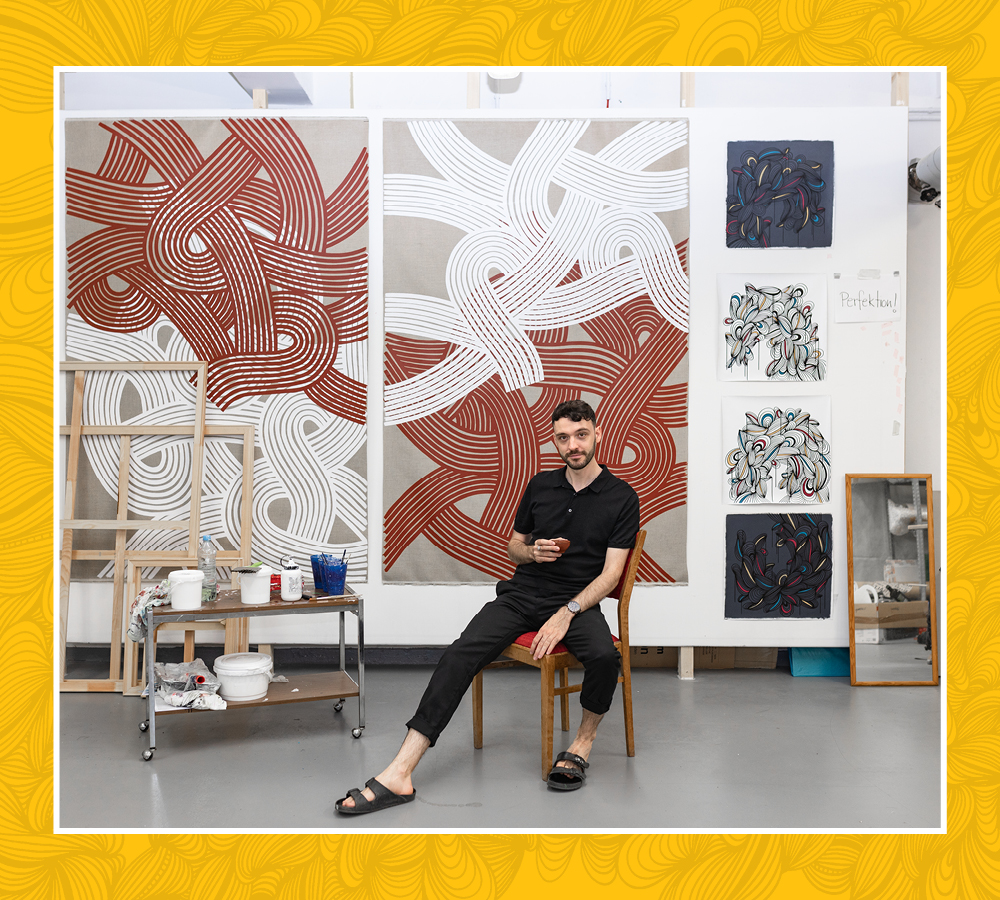
“Each line is a meditation, and I’m very happy to do what my heart really wants,” says the practicing Buddhist who has created stunning public works in Baton Rouge since connecting locally with Connelly. “Every time I paint, I go into a flow state, and forget everything else around me. It’s like going into a bubble, a world where there is no negativity.”
Röhlen grew up in a small, conservative blue-collar town in western Germany. He had to travel hours to Cologne and Düsseldorf to experience art and creative culture. As a teen he became a tagger, chasing the thrills of graffiti art—“because it was rebellious,” he says—armed with spray paint and a mathematical mind for precise shapes.
“I changed later because I felt such a strong urge to express something, but I couldn’t express it through graffiti,” he says. “That was too limited.”
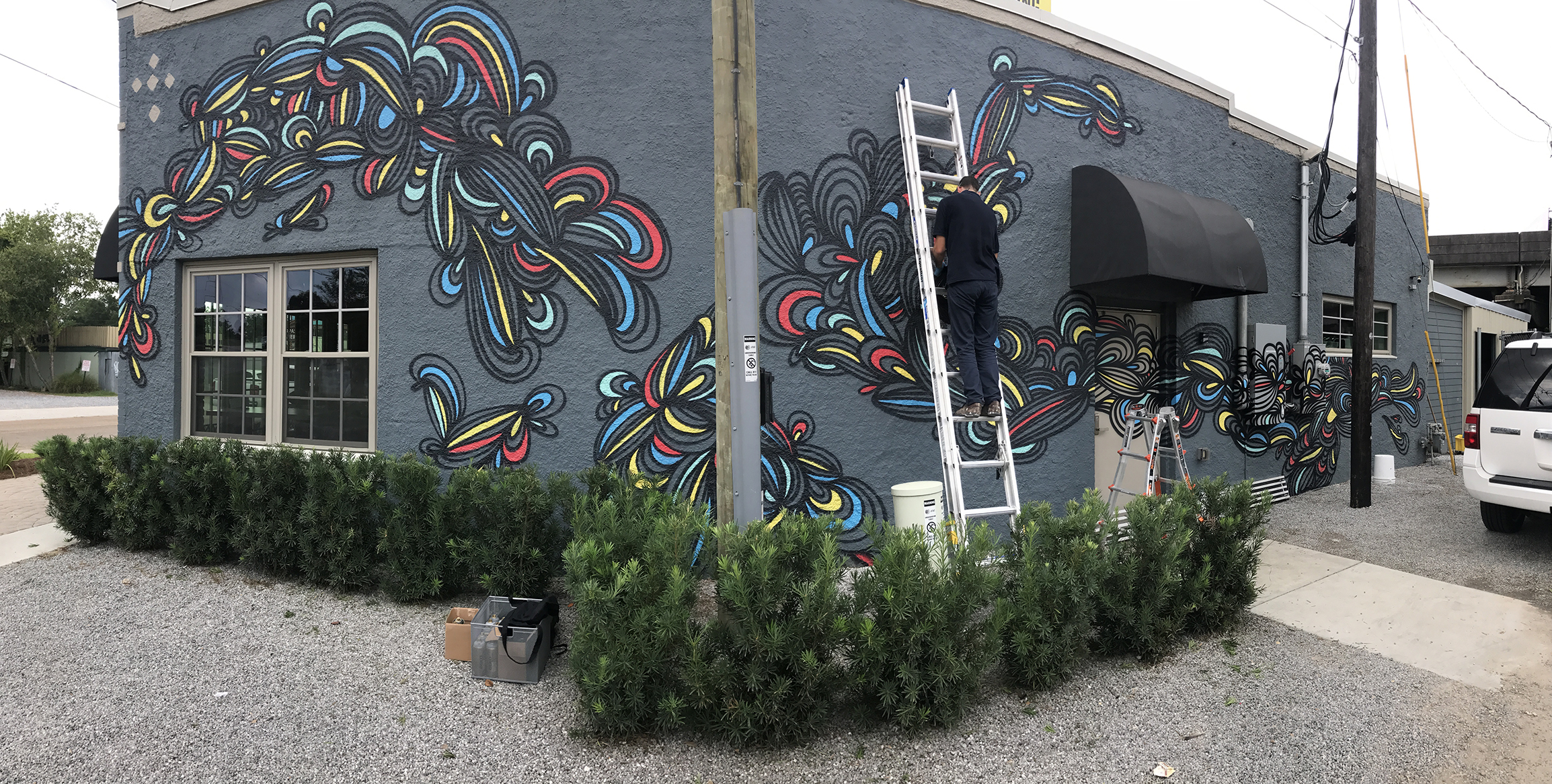
After rejecting a career as an industrial mechanic, his father’s line of work, Röhlen moved to London at 23 to try art full-time.
“It was life-changing to take that risk with no gallery or any connection there, to throw myself into cold water, it was such a change in my life,” Röhlen says. “To take a risk and go for what’s inside that you want, it’s worth the attempt. It’s always worth it to try.”
Connelly and Norris soon found his London work on Instagram. Inspired by Kevin Harris’ Museum of Public Art in Baton Rouge which brought the likes of acclaimed street artists Belin and Odeith to the Capital City, Connelly had already begun shifting some of her gallery’s focus toward more community-building and public art projects with younger artists. Though he’d never even been to the U.S. before, KEF! immediately felt like a perfect fit. Soon, Connelly had him creating his first American mural on the side of Overpass Merchant on Perkins Road.
“Artists that thrive really have three key points: passion, hard work and building connections,” Connelly says. “There’s always an underlying discipline to what they do, and KEF! has that. There’s a great openness about him.”
In the summer of 2017, Connelly’s friend, artist and philanthropist Winifred Ross Reilly, was traveling in Berlin with her husband Kevin and agreed to meet Röhlen in person and report back to the gallery before they sealed the deal.
“He’s very reserved, but he’s game for anything,” Reilly remarks. “He gave me a drawing, even, and we had a wonderful time at dinner. We loved being with him.”
And so, as Connelly likes to say, “We began to dream.”
Flash forward to 2020, and KEF! was on his second work trip to Louisiana, and in the middle of a COVID-extended residency in Baton Rouge, when he added his linear touch to Reilly’s papier-mache art at the dawn of the pandemic.
“He was so content living in our annex and creating, while the rest of us were sort of fracturing,” Norris recalls. “He has a resilient soul I think we all can learn from.”
Röhlen’s collaboration with Reilly helped the gallery’s auctions that spring net $11,900 for local charities, including the Greater Baton Rouge Food Bank.
Visually and empathetically, Röhlen has had a big impact on this adopted city of his, even as his unassuming Instagram posts are filled with gentle head-turners like “Have patience,” and “Butterflies grace with mystic touch.”
“Personally, I’m drawn to it because it’s both powerful and peaceful,” says Michael Lang, principal at Key Real Estate, who oversees downtown’s Commerce Building where KEF! emblazoned the long hallway behind what is now The Vintage with a stunning mural in 2018. “He’s humble, thoughtful, a deep thinker—even as he’s gotten so popular, as he should be.”
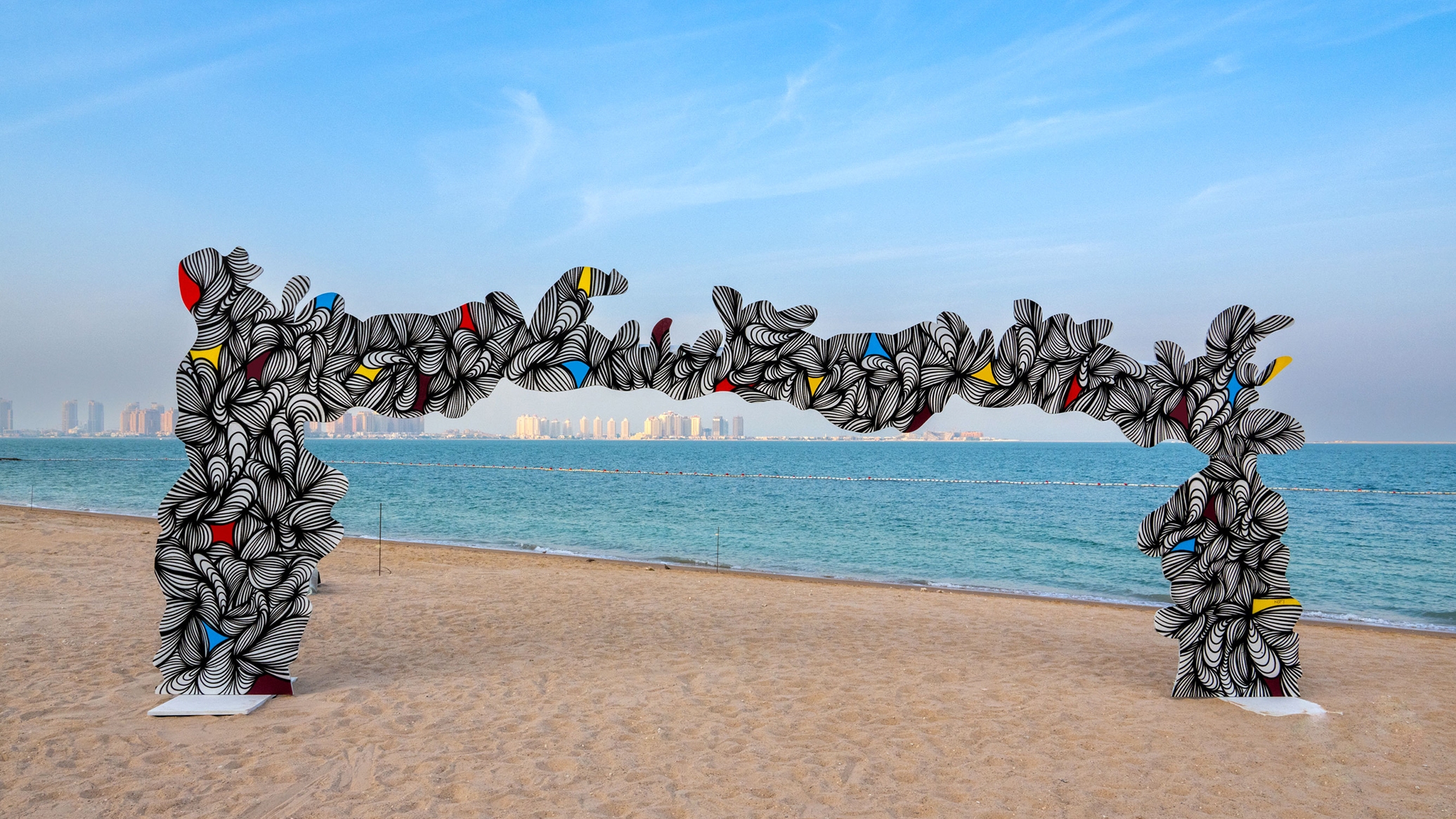
While he’s fast becoming a global artist, the KEF! connection to Baton Rouge remains strong. In 2023, he graced the Mississippi-facing Emergent Method building downtown with his unmistakable bubbling nests of curves and colors.
“He has art friends all over the world now,” Connelly says, “but he’s staying with us because we feel like family. That’s the kind of person he is.”
Connelly wants to have KEF! back again soon, this time perhaps for a public art project in an often-overlooked location. “Somewhere inclusive that would be a true gift to the community outside of the typical small arts circle,” Norris says. “Simon is so young to have reached this level of success so far, so it’ll be interesting to see where he will take this. What is the dream for the next 30 years?”
The renowned Orlinda Gallery in Mulhouse, France, a northwestern town near the German and Swiss borders, now represents Röhlen’s French interests, calling his abstract art important for its “harmonious and peaceful lines.”
Whether it’s that region’s complex post-war cultural climate or south Louisiana’s economic and environmental uncertainties, harmony is a universal theme that resonates with all those thirsty for it. It’s the destination that both Röhlen’s art and his meditations journey toward, like dreaming of an oasis from the middle of a more desolate landscape.
When the desert can’t grow flowers, wind, gypsum, sand, and lots of time collaborate to make desert roses. You can see these curvaceous “blooming” brown crystal clusters in Oklahoma, but Röhlen discovered them in Qatar, where the architecture of the National Museum is shaped like a giant one, and the artist created a desert rose-inspired archway to frame a nearly-dollhouse view of the distant capital city of Doha, with the waves of the Persian Gulf below, and the cottony clouds suspended high above.
Nature, Röhlen believes, is an infinite inspiration, and a trustworthy guide. It’s why he travels a lot now, not to promote himself, but to rest, unplug and keep learning.
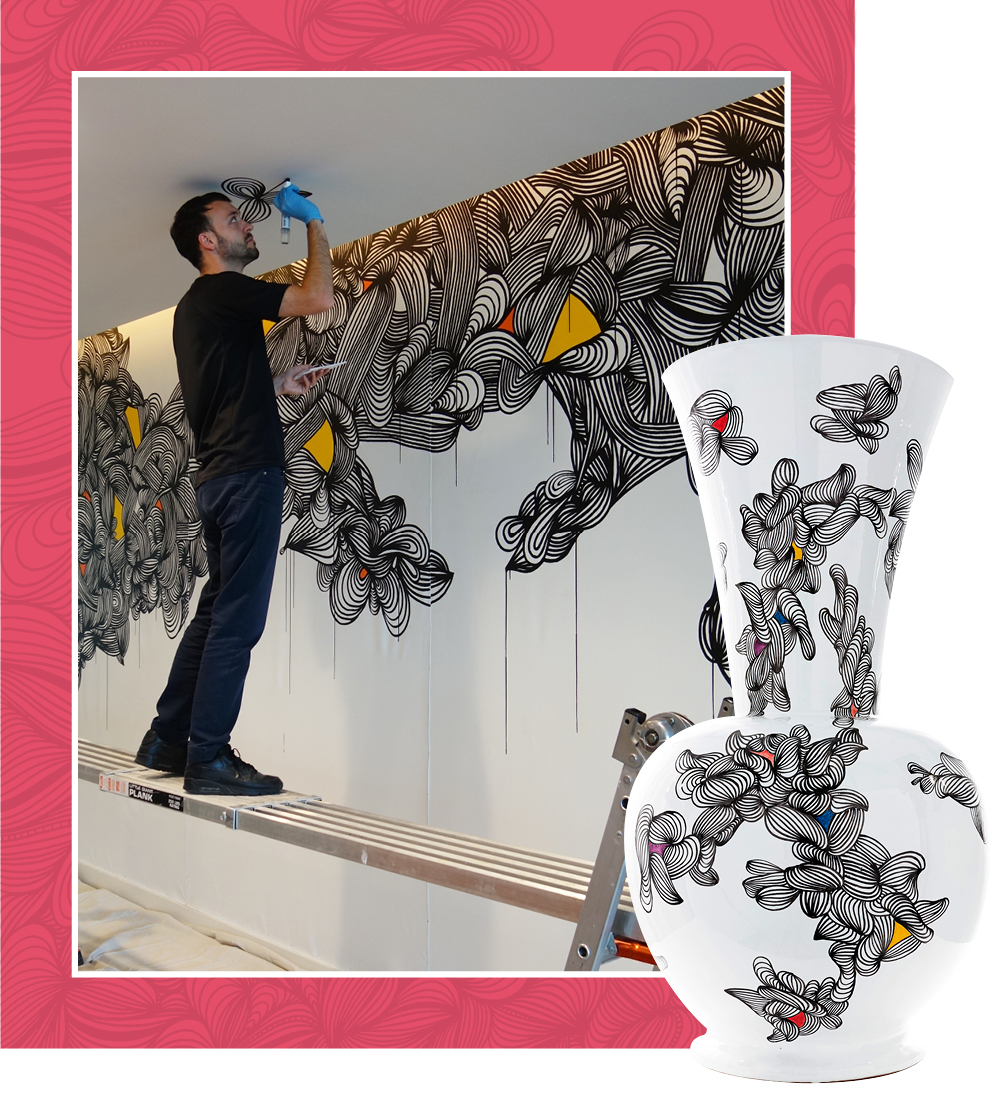
(right) Recently, Röhlen’s larger-than-life lines have shrunken down, making their way onto pottery in one of his projects in Italy in 2022. Courtesy Simon Röhlen
“I’m always very grateful for opportunities in the spotlight, and it’s satisfying,” says Röhlen, who has decorated a prominent Urban Outfitters in London, and painted live on UK morning television. “But for my inner life, I try not to be too attached to success and the things that come with that.”
Röhlen’s thought process mirrors that of another deeply spiritual artist, the late poet and songwriter Leonard Cohen. “There’s a crack in everything. That’s how the light gets in,” sang the world-weary but hopeful icon in 1992’s “Anthem,” a song written shortly before Cohen retreated from the industry to live in a Buddhist temple for half a decade.
The looping, arcing movement in Röhlen’s visuals is nothing if not lyrical. Whether on canvas, ceramics, or an exterior, his art is surreal but idyllic, with balance-seeking storylines winding long through a garden of surprises, but always circling back to the internal, escapable, repairable self—just like Cohen’s poems.
“KEF!” is the excitable street art tag he’s known for, but to the artist himself, those three letters mean a “scar.” In this way, Röhlen’s art acknowledges not just a wild surface-level mark, but a pre-existing wound, and, ultimately, a restoration. This is why his work feels at once nostalgic and futuristic. We miss it, and we hope for it, too.
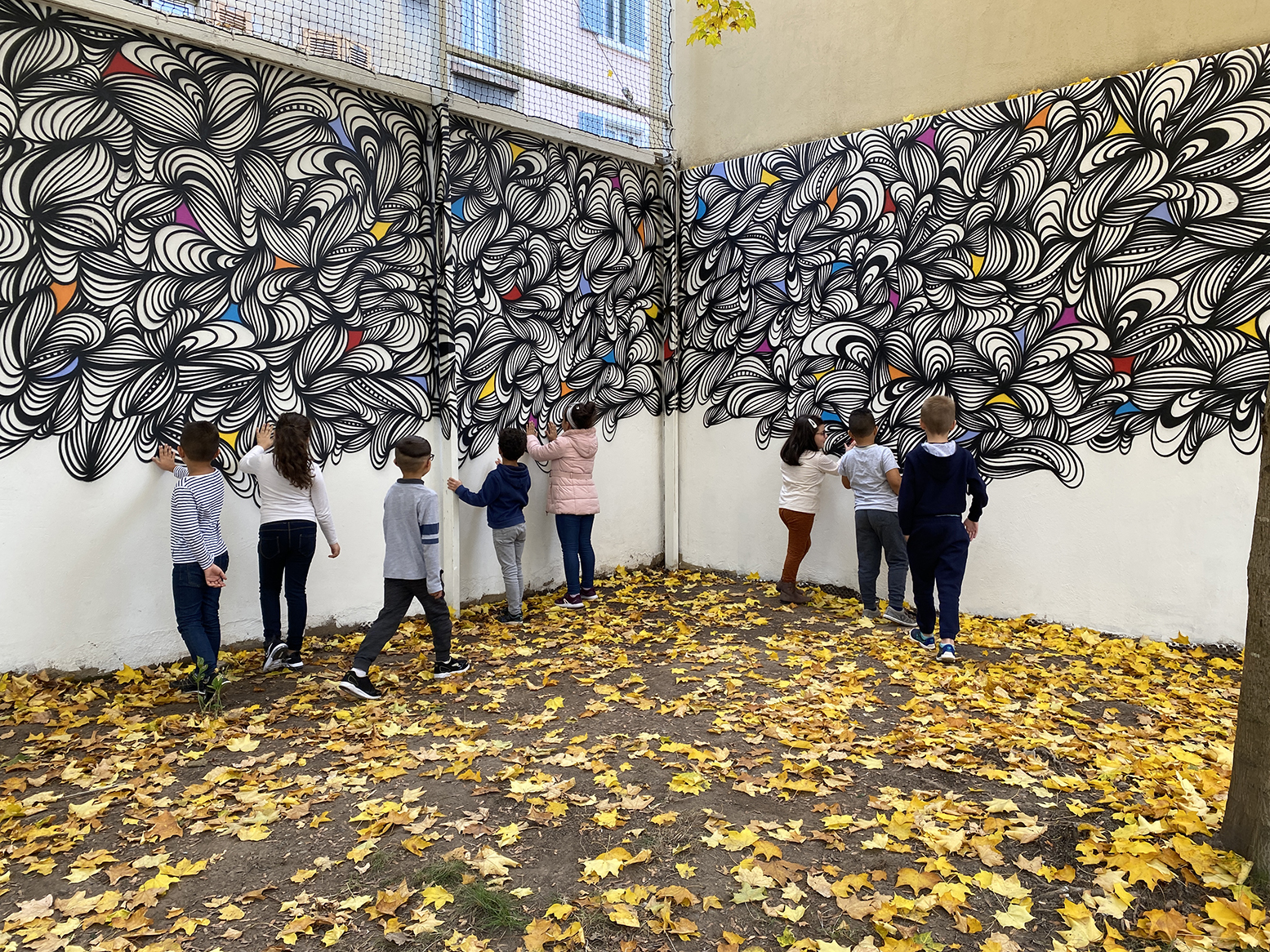
With such intentional creative expression, Röhlen’s is a process that, like the desert rose, requires all the right elements—including time.
But beauty doesn’t always arrive in ways that the walls of our cities or tunnels of our hearts expect. Scars signal that healing has taken place. And it’s the cracks that let the light in.
This vulnerable point is where art lives and breathes best, and it’s where KEF! can be found.
That this world can feel like one vast fallout shelter, a house built of such collected brokenness and uncertainty, of physical decay and spiritual vacancy, of screaming voices and oppressive hands, means it is all the more uplifting when a quiet artist from a small working-class German town can put paint to stone in London or Hong Kong or Baton Rouge, and leave lines so redemptive they give rise to a hope renewed for the harmony of all things, for the acceptance of this present darkness as a passing dream, for a swinging wide of that too-heavy shelter door to see the sky.
“I never want to tell people what to see in my work. I just hope that they feel my work,” Röhlen says. “The harmony, the balance, and some serenity. I’m happy when people can feel those things so it has an impact on their life, which could be a positive thing for others in their life, too, and hopefully one day it can grow outward from there.”




